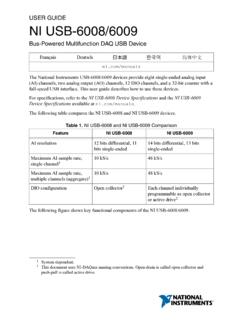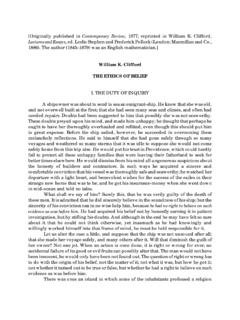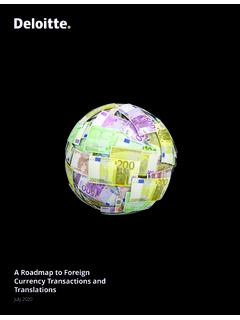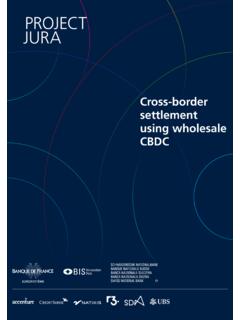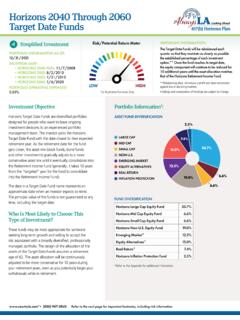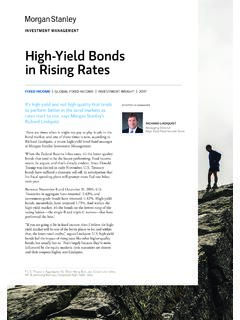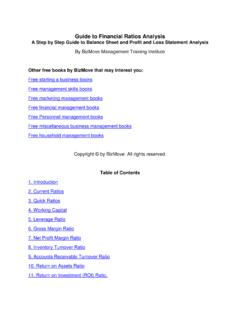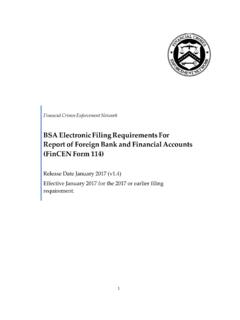Transcription of Chapter One: The Investment Environment
1 Study notes of Bodie, Kane & Marcus By Zhipeng Yan Investment Zvi Bodie, Alex Kane and Alan J. Marcus Chapter One: The Investment 2 Chapter Two: Financial 4 Chapter Three: How securities Are 8 Chapter Six: Risk and risk 12 Chapter Seven: Capital Allocation between the Risky asset and the risk-free 17 Chapter Eight: Optimal Risky Portfolios:.. 20 Chapter Nine: The Capital Asset Pricing 24 Chapter Ten: Index Models:.. 28 Chapter Eleven: Arbitrage Pricing Theory and multifactor models of risk and 32 Chapter Twelve: Market Efficiency and Behavioral 35 Chapter Fourteen: Bond prices and 43 Chapter Fifteen: The Term Structure of Interest 48 Chapter Sixteen: Managing Bond 53 Chapter Eighteen: Equity Valuation 57 Chapter Twenty: Option Markets: 59 Chapter Twenty-one: Option 64 Chapter Twenty-two: Futures 74 - 1 - Study notes of Bodie, Kane & Marcus By Zhipeng Yan Chapter One: The Investment Environment I.
2 Real assets versus financial assets 1. The material wealth of a society is determined ultimately by the productive capacity of its economy, which is a function of the real assets of the economy: the land, buildings, knowledge, and machines that are used to produce goods and the workers whose skills are necessary to use those resources. 2. Financial assets, like stocks or bonds, contribute to the productive capacity of the economy indirectly, because they allow for separation of the ownership and management of the firm and facilitate the transfer of funds to enterprise with attractive Investment opportunities.
3 Financial assets are claims to the income generated by real assets. 3. Real vs. Financial assets: a. Real assets produce goods and services, whereas financial assets define the allocation of income or wealth among investors. b. They are distinguished operationally by the balance sheets of individuals and firms in the economy. Whereas real assets appear only on the asset side of the balance sheet, financial assets always appear on both sides of the balance sheet. Your financial claim on a firm is an asset, but the firm s issuance of that claim is the firm s liability.
4 When we aggregate over all balance sheets, financial assets will cancel out, leaving only the sum of real assets as the net wealth of the aggregate economy. c. Financial assets are created and destroyed in the ordinary course of doing business. when a loan is paid off, both the creditor s claim and the debtor s obligation cease to exist. In contrast, real assets are destroyed only by accident or by wearing out over time. II. Financial markets and the economy 1. Smoothing consumption: Store ( by stocks or bonds) your wealth in financial assets in high earnings periods, sell these assets to provide funds for your consumption in low earnings periods (say, after retirement).
5 2. Allocation of risk: virtually all real assets involve some risk (so do financial assets). If a person is uncertain about the future of GM, he can choose to buy GM s stock if he is more risk-tolerant, or he can buy GM s bonds, if he is more conservative. 3. Separation of ownership and management: Let professional managers manage the firm. Owners can easily sell the stocks of the firm if they don t like the incumbent management team or police the managers through board of directors ( stick ) or use compensation plans tie the income of managers to the success of the firm ( carrot ).
6 In some cases, other firms may acquire the firm if they observe the firm is underperforming (market discipline). III. Clients of the financial system 1. Household sector: a. Tax concerns: people in different tax brackets need different financial assets with different tax characteristics. - 2 - Study notes of Bodie, Kane & Marcus By Zhipeng Yan b. Risk concerns: Differences in risk tolerance create demand for assets with a variety of risk-return combination. 2. Business sector: business is more concerned about how to finance their investments, through debt or equity either privately or publicly.
7 Business issuing securities to the public have several objectives. First, they want to get the best price possible for their securities . Second, they want to market the issues to the public at the lowest possible cost. This has two implications. First, business may hire specialists to market their securities . Second, most business will prefer to issue fairly simple securities that require the least extensive incremental analysis and, correspondingly, are the least expensive to arrange. Such a demand for simplicity or uniformity by business-sector issuers is likely to be at odds with the household sector s demand for a wide variety of risk-specific securities .
8 This mismatch of objectives gives rise to an industry of middlemen who act as intermediaries between the two sectors, specializing in transforming simple securities into complex issues that suit particular market niches. 3. Government sector: Governments cannot sell equity shares. They are restricted to borrowing to raise funds when tax revenues are not sufficient to cover expenditures. A special role of the government is in regulating the financial Environment . IV. The Environment responds to clientele demands: The smallness of households creates a market niche for financial intermediaries, mutual funds, and Investment companies.
9 Economies of scale and specialization are factors supporting the Investment banking industry. V. Markets and market structure 1. Direct search market: buyers and sellers must seek each other out directly. 2. Brokered market: real estate market, primary market and block transactions. 3. Dealer markets: dealers trade assets for their own accounts. Their profit margin is the bid-asked spread. 4. Auction market: all transactors in a good converge at one place to bid on or offer a good. If all participants converge, they can arrive at mutually agreeable prices and thus save the bid-asked spread.
10 VI. Ongoing trends 1. Globalization: investors can participate in foreign Investment opportunities in several ways: a. purchase foreign securities using American Depository Receipts (ADRs), which are domestically traded securities that represent claims to shares of foreign stocks. b. purchase foreign securities that are offered in dollars. c. Buy mutual funds that invest internationally. d. buy derivative securities with payoffs that depend on prices in foreign security markets. - 3 - Study notes of Bodie, Kane & Marcus By Zhipeng Yan 2. Securitization: the biggest asset-backed securities are for credit card debt, car loans, home equity loans, student loans and debt of firms.

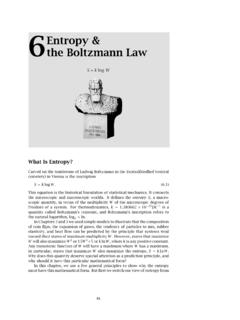




![LINEAR ALGEBRA MIDTERM [EXAM A] - Brandeis University](/cache/preview/2/a/5/a/8/6/f/b/thumb-2a5a86fbead498bbe4749596c75df645.jpg)
